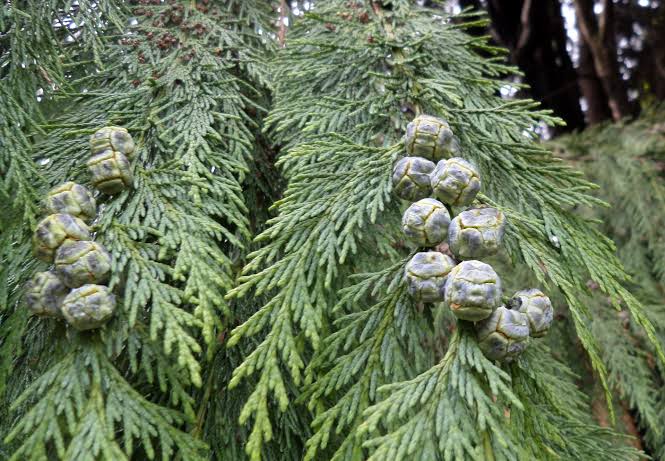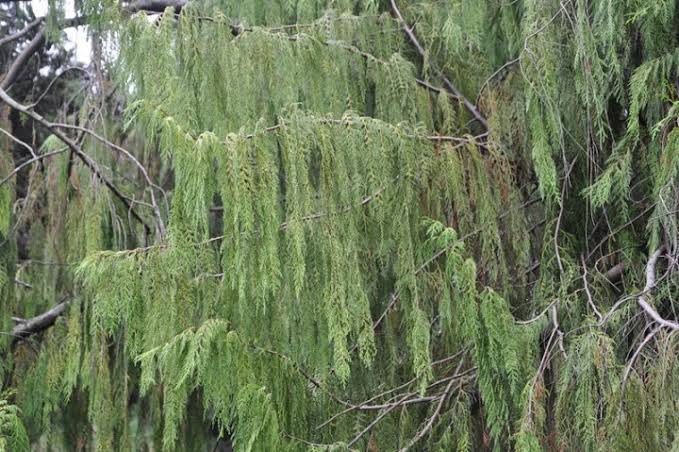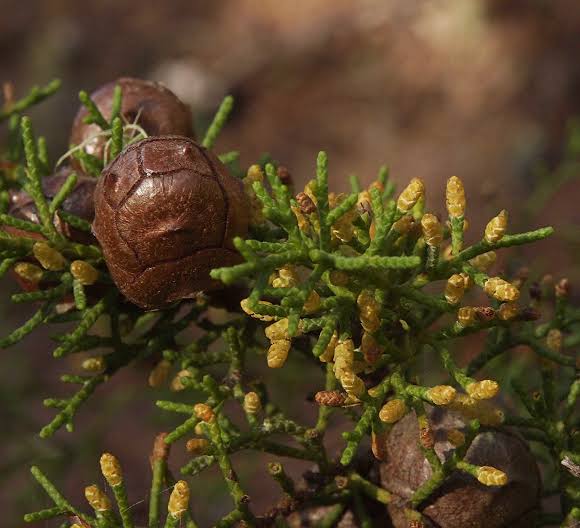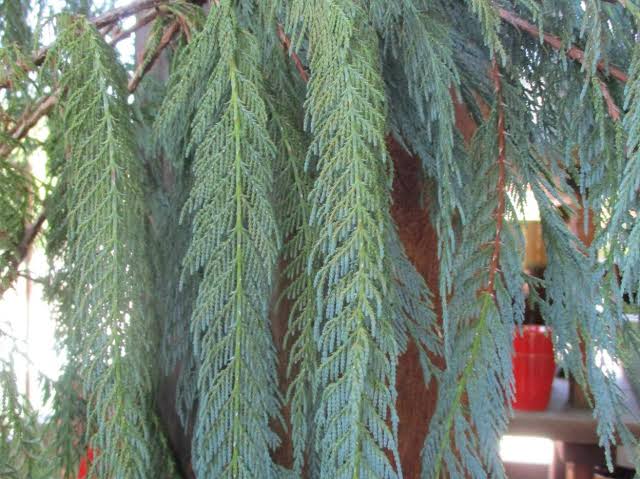A Cypress tree is any tree belonging to the family Cupressaceae, though not every tree in this family bears the name cypress in its common name. Found throughout the world with species native to almost every continent, cypress trees make an attractive addition to any landscape. With more than 25 genera and nearly 130 species, it’s easy to choose one for almost any spot, climate and habitat.
The foliage of the Cupressaceae family ranges from silvery-green to dark, true green with everything in between. The leaf arrangement of cypress trees is either spirally, opposite pairs with each pair at a 90-degree angle to the previous pair of leaves, or in a whorled pattern, depending on the genus or species.
Most species of cypress trees are evergreen, with the exception of those in the Taxodium genus, which are deciduous in nature. Deciduous cypress trees still bear needles, though the needles turn from green to reddish-brown in fall and winter.
Cypress trees exist in an array of climates and extremes. Some prefer swampy, wet and riparian areas for example, while others thrive in arid, desert-like environments. With the exception of these extremes, most cypress trees tolerate a temperate environment.
Varieties Of Cypress Trees
1. Monterey cypress

Monterey cypress, Hesperocyparis macrocarpa is a medium-sized evergreen tree. It takes on different forms depending on where it is planted and how old it is. The tree can become smallish, gnarled, and irregular when impacted by extreme forces of wind, weather, and sea. It grows to heights of up to 40 meters (133 feet) in perfect growing conditions, and its trunk diameter can reach 2.5 meters (over 8 feet).
Alternatively, under less challenging conditions, Monterey Cypresses can grow tall and statuesque, featuring a muscular, deeply furrowed trunk rising up to an open, often a-symmetrical crown of heavy branches decorated with dense sprays of bright green foliage.
The foliage grows in dense sprays which are bright green in color and release a deep lemony aroma when crushed. The leaves are scale-like, 2–5 mm long, and produced on rounded (not flattened) shoots; seedlings up to a year old have needle-like leaves 4–8 mm long. This conifer produces tiny, brilliant yellow male flowers at its foliage tips and clumps of female cones which are roundish, heavily plated, and around 1-2 inches in diameter.
2. Bald Cypress

Taxodium distichum, (Bald cypress) also referred to as swamp cypress is a large, slow growing deciduous conifer that typically grows to 130 feet tall, developing prominent roots or “knees” above the ground. The bald cypress is usually found in swampy areas and along riverbanks. These locations provide the trees with the plentiful water they need to thrive and with the wet conditions necessary for reproduction. It is native to the southeastern United States.
The bark is grayish brown to reddish brown, thin, and fibrous with a stringy texture; it has a vertically, interwoven pattern of shallow ridges and narrow furrows. The needle-like leaves are 1⁄2 to 3⁄4 inch long and are simple, alternate, green and linear, with entire margins. In autumn, the leaves turn yellow or copper red. The bald cypress drops its needles each winter and then grows a new set in spring.
Other Common names for this tree include white cypress, tidewater red cypress, gulf cypress and red cypress.
Also Read: Different Types of Arbovitae Varieties
3. Pond Cypress

Taxodium ascendens, also known as pond cypress is native to North America. It occurs mainly in still blackwater rivers, ponds and swamps without silt-rich flood deposits. It predominates in cypress dome habitats. Pond cypress can live hundreds of years and typically reaches heights of 50 to 60 feet or more. In the landscape, it is a low-maintenance tree that can tolerate dry locations, because during periods of drought, pond cypress drops its leaves to preserve water for the rest of the tree.
Like bald cypresses, pond cypresses growing in water have a characteristic growth trait called cypress knees; these are woody projections called ‘pneumatophores’, which are sent above the water from the roots.
The leaves are shorter (3–10 mm long), slenderer and are on shoots that tend to be erect rather than spreading. The trunk is expanded at the base, even on young trees, assisting the tree in anchoring in the soft, muddy soil. The cones also tend to be smaller, not over 2.5 cm diameter. The bark is also a paler gray color.
4. Mediterranean Cypress ( Italian Cypress)

Cupressus sempervirens, the Mediterranean cypress (also known as Italian cypress, Tuscan cypress, Persian cypress, or pencil pine) is a medium-sized coniferous evergreen tree to 35 m (115 ft) tall, with a conic crown with level branches and variably loosely hanging branchlets. It is very long-lived, with some trees reported to be over 1,000 years old. This cypress species is found in dry, hilly locations where it grows slender and tall to a height of 60 feet.
The foliage grows in dense sprays, dark green in color. The leaves are scale-like and produced on rounded (not flattened) shoots. The seed cones are ovoid or oblong with scales, green at first, maturing brown about 20–24 months after pollination. Italian cypress is found across the Mediterranean region. It has also been grown in colder places like North America, New Zealand, and the British Isles.
Also Read: Different Types of Juniper Tree Varieties
5. Hinoki Cypress

Hinoki cypress (Chamaecyparis obtusa) also known as hinoki false cypress is a large evergreen tree from Japan with a broad, softly pyramidal shape with spreading, horizontal branches. It prefers moist fertile loams but is adaptable to other soils as long as they are well-drained. It does best in full sun but can tolerate some shade and needs protection from the wind.
The leaves are made up of overlapping scales and have a drooping, fern-like appearance. Left to grow to its full size, hinoki cypress can reach 50 to 75 feet tall and 15 to 25 feet wide and the tree forms into a rounded pyramid. It also features globose cones that are 8 to 12 millimeters in diameter.
This tree has a slow to medium growth rate and can grow about 12 inches per year (some cultivars grow much more slowly). It is typically planted in fall or early spring and can be grown from seed sown in spring.
In the garden, Hinoki cypress can be grown alongside other conifers to create a woodland effect. If you choose to grown one of the many varieties, such as “Gracilis” with its nodding branches or “Nana Lutea” with its bright yellow foliage (Ref1), you can grow the plant as a focal feature.
6. Arizona Cypress

The Arizona cypress (Cupressus arizonica) is a conical, broadly pyramidal growing conifer. This tree is an excellent choice for inclusion in a xeriscape and other desert landscaping because it can handle less water if the root system has had a chance to spread and entrench itself. The Arizona cypress can be grown for use as a cut or living Christmas tree. The tree grows at a moderate pace, adding 1 to 2 feet a year and topping out at between 40 and 50 feet.
The branches are sturdy but have a lacy appearance. The tiny leaves of an Arizona cypress tree look like scales and come in different shades of green on the different varieties including gray-green and blue-green. The Arizona cypress is monoecious and both the male and female flowers are little, yellowish-green, and found at the tips of the branches. This plant can be used as a specimen tree or for windbreaks. The plant is also moderately salt tolerant.
Also Read: Types of Willow Tree Varieties
7. Leyland Cypress

The Leyland cypress is a hybrid tree produced by crossing two native Pacific trees, the Monterey cypress (Cupressus macrocarpa) and the Alaska cedar, also called the nootka false cypress (Chamaecyparis nootkatensis).It has an oval-to-pyramidal shape, with graceful branches that tend to arch slightly and are covered in flattened arrays of soft, gray-green pointed needles.
The tree is fast-growing, adding 2 or 3 feet to its height each year until it’s mature, when it can be 60 to 70 feet tall with a 10- to 20-foot spread. It has scaly, reddish-brown bark on its trunk and main branches, and dark brown cones about 3/4 inch in width in fall and winter.
The Leyland cypress tree does best in a spot that gets full sun and can also grow in a location that gets shifting shade during the day, but is not a good choice for a fully shaded spot. The best planting time is early spring, to give the tree a full season of growth before winter cold arrives.
8. Nootka Cypress

Alaskan weeping cypress, also known as Nootka cypress, Nootka false cypress, Alaska cedar and yellow cypress, is a slow growing variety of cypress, usually adding no more than 12 inches to its height in a growing season. Its native range begins in Alaska and extends down the West Coast into California.
Though the species can grow up to 90 feet tall in its native habitat, the weeping Alaskan cedar generally grows to 50 feet tall when grown as an ornamental. The tree grows in a conical shape and has long, open branches that curve gently upward. Its normal spread of 15 to 25 feet gives it a tall, narrow form.
The Alaskan weeping cedar’s ascending branches are covered with drooping branchlets of blue-green or gray-green scale-like foliage. When bruised or crushed, the leaves release a scent that some find unpleasant. Its light gray-green bark is thin with a rough, furrowed and sometimes exfoliating surface.
Although it is usually used as a specimen tree for large landscape areas, the Alaskan weeping cypress may also be planted as a lawn tree. Its scaly, bluish-green evergreen leaves also add year-round color to gardens, and it especially stands out in areas where it is surrounded by deciduous plants.
Also Read: Types of Evergreen Trees For Landscaping
9. Lawson Cypress

Lawson false cypress (Chamaecyparis lawsoniana) also referred to as Port Orford cedar and ginger pine is a large evergreen tree, maturing at heights of 200 feet (60 m) tall or more, with trunks up to 4 to 7 feet (1.2 – 2 m) in diameter, measured at breast height.
This fast-growing species of cypress is commonly found in churchyards, parks and hedges; and as ‘cultivars’ in suburban gardens. The leaves are in the form of flat ‘sprays’ which are most likely to be confused with those of the Western Red Cedar but the cones are quite different.
Lawson cypress is typically an evergreen tree with flat fern-like foliage, scales rather than needles and small cones that (when present) are about 1cm or less in diameter. Crushed Lawson cypress foliage smells of parsley; a resinous, acrid smell suggests you have a Leyland cypress specimen. The bark is reddish-brown in color and is fibrous to scaly in vertical strips.
10. Chinese Weeping Cypress

Cupressus funebris, the Chinese weeping cypress is a medium-sized tree growing to 20–35 m tall, with a trunk up to 2 m diameter. The foliage grows in dense, usually moderately decumbent and pendulous sprays of bright green, very slender, slightly flattened shoots.
The leaves are scale-like, 1–2 mm long, up to 5 mm long on strong lead shoots; young trees up to about 5–10 years old have juvenile foliage with soft needle-like leaves 3–8 mm long. The seed cones are globose with 6–10 scales (usually 8), green, maturing dark brown about 24 months after pollination. The cones open at maturity to shed the seed. The pollen cones usually release pollen in early spring.
Also Read: Popular Types of Oak Trees
11. Gowen Cypress

Gowen cypress is a species of cypress tree or shrub that grows to mature heights of 33 feet (10 m) tall, but to 165 feet (50 m) when growing under favorable conditions, or maturing and bearing cones at as little as 8 inches (20 cm) tall when growing on shallow, hard-pan soils.
The foliage grows in dense sprays, dark green to somewhat yellow-green in color. The leaves are scale-like, 2–5 mm (0.08–0.20 in) long, and produced on rounded (not flattened) shoots. Its crown is globose to columnar, with dense or sparse branching.
The Gowen Cypress is a rare cypress that only occurs in two locations in the world — both on the Monterey Penisula and only one of those locations is in Santa Lucia Mountains.
12. Macnab Cypress

Cupressus macnabiana (MacNab cypress or Shasta cypress) is a shorter cypress averaging between 9-20 feet tall, with a spreading crown that is often broader than its height. Macnab cypress makes a good privacy screen and it is resistant to Texas root rot and its roots have a low potential to damage nearby pavement and underground pipes.
The foliage is produced in dense, short flat sprays (unlike most other California cypresses, which do not have flattened sprays), bright glaucous gray-green, with a strong spicy-resinous scent. The leaves are scale-like, 1–2 mm long with an acute apex, and a conspicuous white resin gland on the center of the leaf.
13. Pygmy Cypress

Cupressus pigmaea, the Mendocino cypress or pygmy cypress grows near the coast and in nearby mountain ranges of northwestern California. It is a stunted tree from 0.2–5 meters in height at maturity. When growing on deep, well-drained soils it can be a large tree up to 30–50 meters in height and 1–2.4 m in trunk diameter.
The foliage is a dull dark to light green color, with scale-like leaves 1–1.5 mm long, with the leaf tips not spreading; seedlings bear needle-like leaves 8–10 mm long. The cones are small, 11–24 mm long, and almost spherical, with six or eight scales arranged in opposite decussate pairs, with the bract visible as no more than a small lump or short spine on the scale. The bark is dark gray-brown, with stringy texture, and fissured on old trees.
Also Read: Type of Maple Trees
14. Kashmir Cypress

Cupressus cashmeriana, the Bhutan cypress or Kashmir cypress, is a medium-sized to large tree growing 66–148 ft tall, with a trunk up to 8 ft diameter. The foliage grows in strongly pendulous sprays of blue-green, very slender, flattened shoots. The leaves are scale-like, on strong lead shoots. Young trees up to about 5 years old have juvenile foliage with soft needle-like leaves.
The seed cones are ovoid, with scales, dark green, maturing dark brown about 24 months after pollination. Its cones open at maturity to shed the seed. The pollen cones release pollen in early spring. This cypress species is native to the eastern Himalaya in Bhutan and adjacent areas of Arunachal Pradesh in northeastern India.
15. Tecate Cypress

Cupressus forbesii, Tecate cypress also referred to as Forbes’ cypress is an upright tree growing 20-30 ft. tall, 12-15 ft. wide and is usually without dominant terminal shoot resulting in a multi-trunked tree. The foliage ranges from rich light green to green, and seed cones are dark brown.
It is found in rocky well-drained soils and can tolerate many months of moisture stress. When grown in landscapes and gardens it can be combined with other drought-tolerant natives and is used for screening or hedging, on slopes and in background areas. This drought-tolerant tree has moderate potential to damage pavement and underground pipes.
Further References
- Types of Cypress Trees: https://conifersociety.org/conifers/articles/10-types-of-cypress-trees-that-everyone-should-know/
- Varieties of Cypress: https://leafyplace.com/cypress-trees/
- Facts About Cypress: https://www.britannica.com/plant/cypress
- Everything You Need To Know About Cypresss Tree: https://www.gardeningknowhow.com/ornamental/trees/cypress/growing-cypress-trees.htm
- Cypress Trees In Florida: https://gardeningsolutions.ifas.ufl.edu/plants/trees-and-shrubs/trees/bald-cypress.html